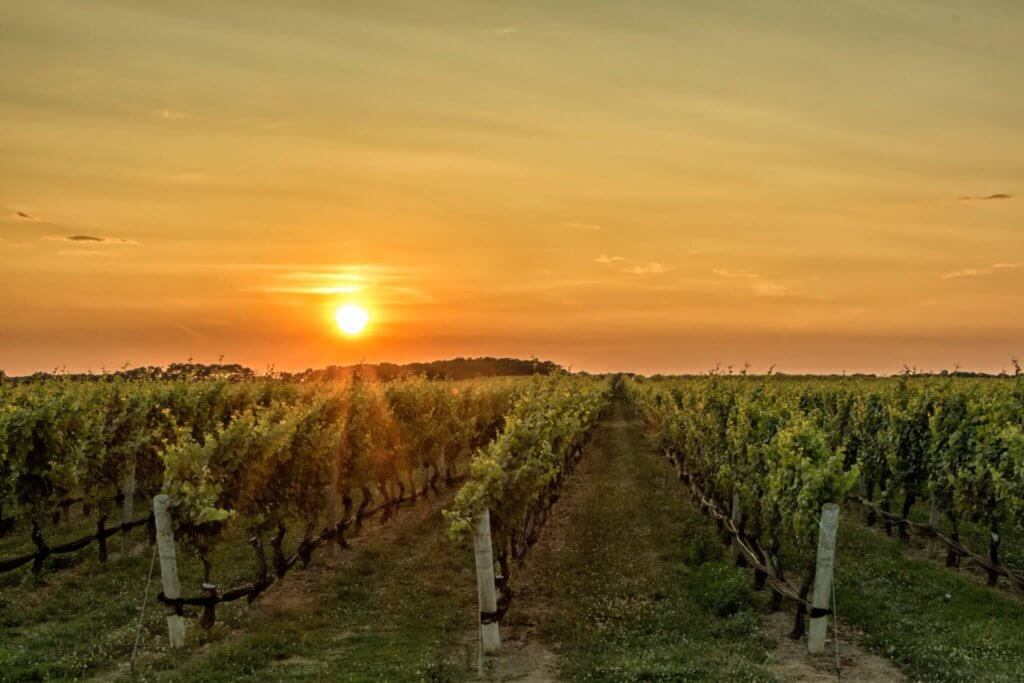
Table of Contents
Sauternes Chateau Coutet Wine
When you visit the Bordeaux region in France, you must experience Sauternes Chateau Coutet.
Sauternes is home to the classic sweet wine of Bordeaux.
Focus on Sauternes Chateau Coutet Wine
With its 13th century square-shaped tower, you will find a great deal of history behind Chateau Coutet.
Chateau Coutet is an 1855 Classified 1st Growth Chateau in Barsac.
When you visit Chateau Coutet, be sure to look at the portraits of all the families living here over the centuries.
Then, look at the picture of Aline Baly, below.
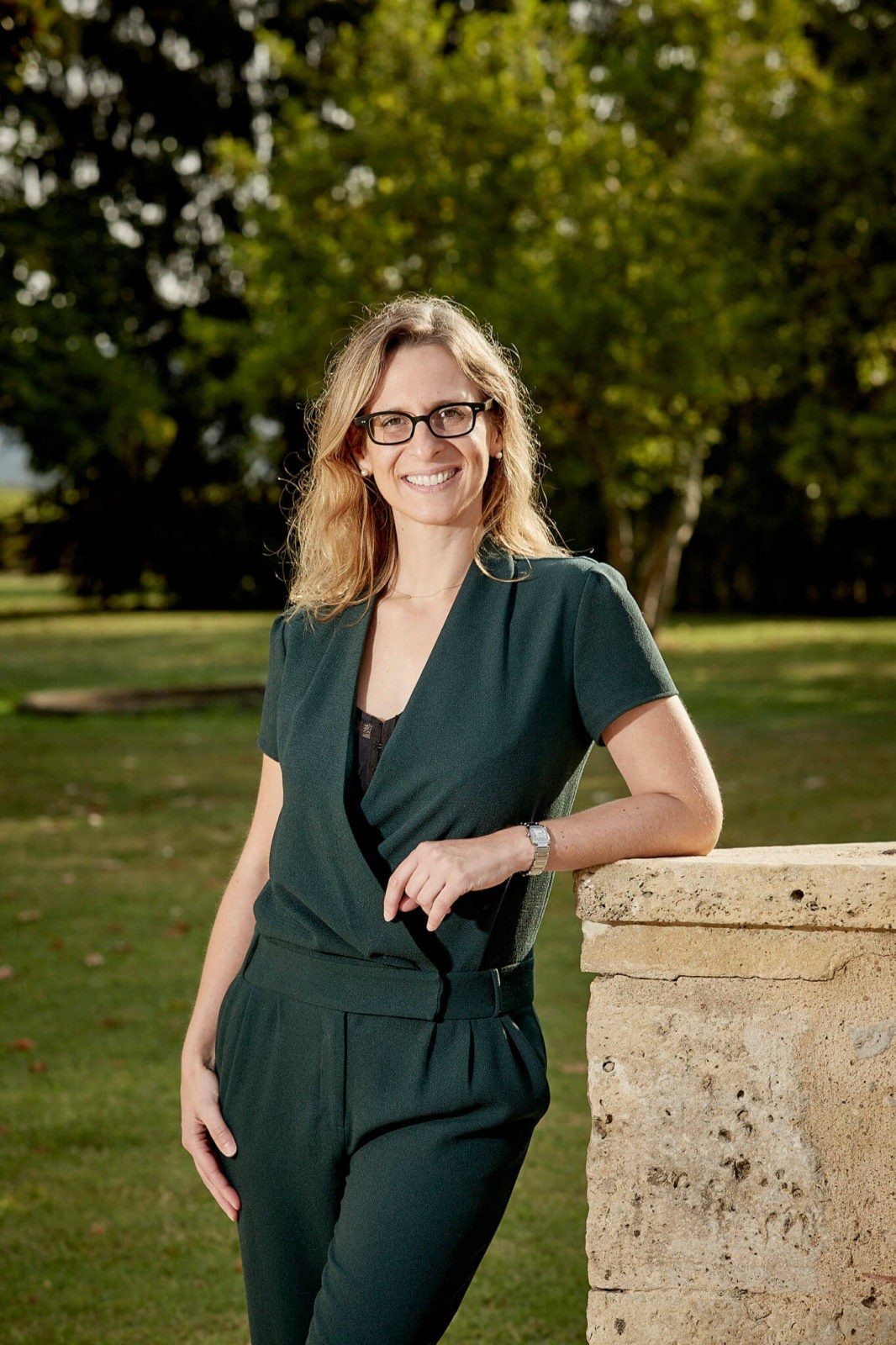
Co-owner of Chateau Coutet, Aline represents the newest generation of owners.
Location of Chateau Coutet Wine
Château Coutet is located in the Barsac commune of Sauternes.
In 1855, it gained recognition as a Classified First Growth for its sweet wines.
Barsac is “an appellation within an appellation.”
It is the most north of the five communes that constitute the Sauternes region,
This means Chateau Coutet can call its wine either Sauternes or Barsac.
Some people just like to call the wine “Sweet Bordeaux.”

Terroir of Chateau Coutet Wine
The terroir of Chateau Coutet is clay and limestone.
The limestone is very important in giving acidity to the Chateau Coutet wines.
This acidity is necessary whether the wines are dry or sweet.
The limestone soil imparts a certain minerality as well.
In fact, the name ‘Coutet’ comes from the word ‘knife’ in the local Sauternes dialect.
For the sweet wines, this means that the freshness can cut like a knife through the sweetness, providing counterpoint.
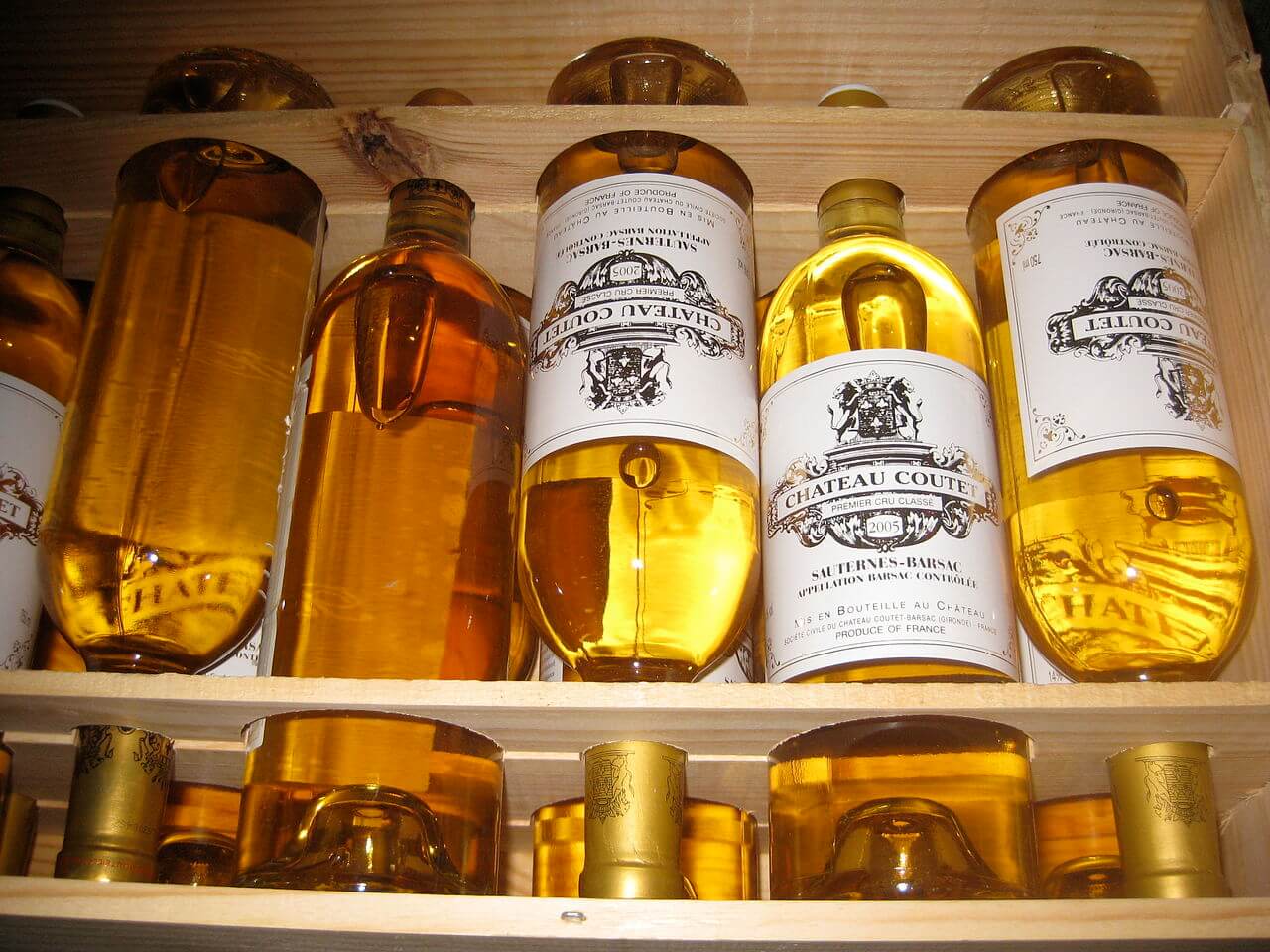
Chateau Coutet: Sweet and Dry Wines
Chateau Coutet is one of the increasing number of Sauternes wineries adding a “dry wine” to their classic portfolio of sweet wines.
The reason is because many people reserve sweet Sauternes for special occasions.
Or dessert …
Actually, drinking Sauternes with dessert today is now considered a faux pas.
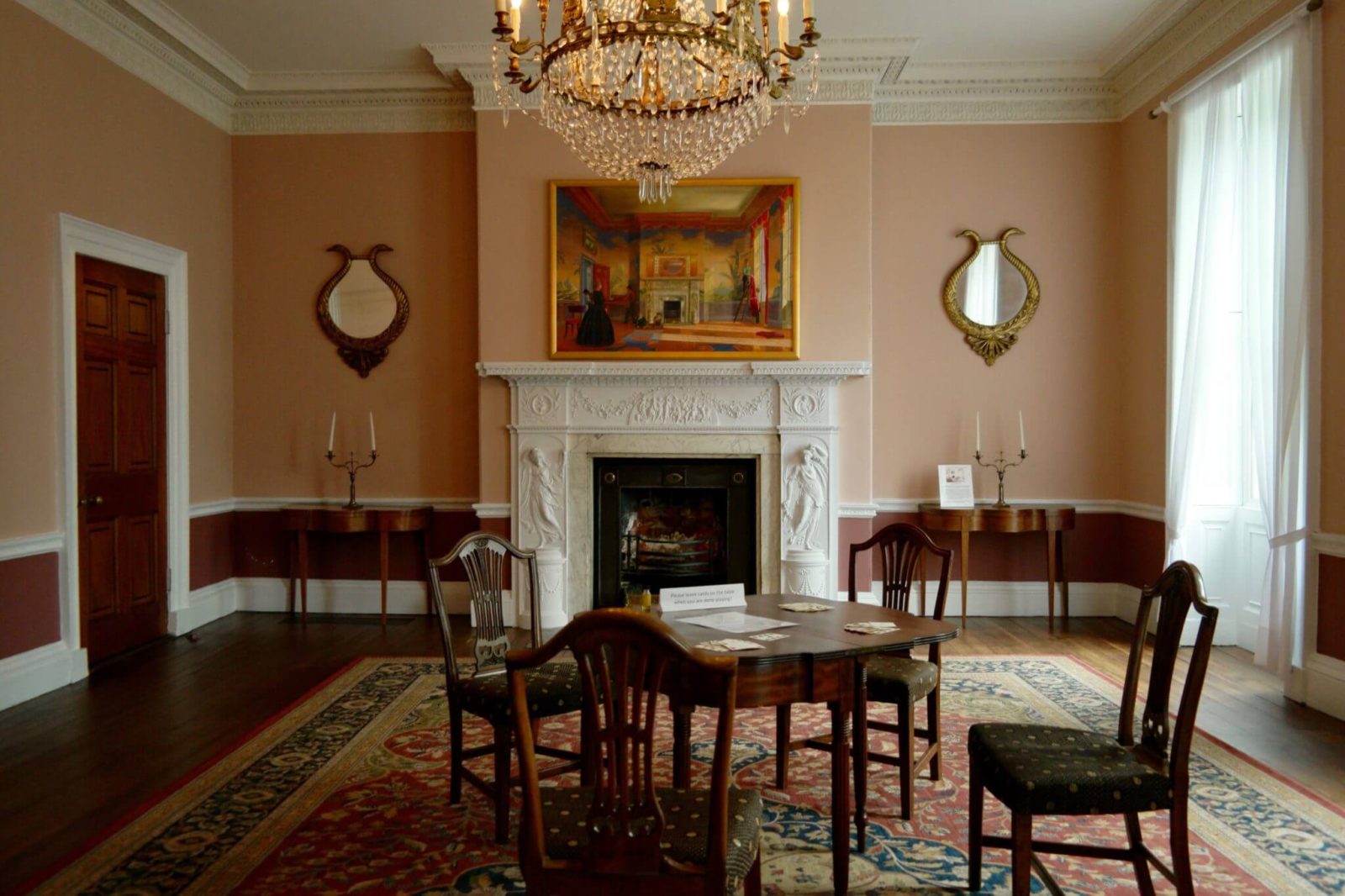
In the 17th and 18th century, sweet Sauternes is traditionally paired with the first courses of a very long, multi course meal.
Think of Sauternes being served with a dish such as sole or salmon …
… prepared with a sauce that could marry the two together, of course.
Today the era of the length, two-hour meetings is over.
Yet Sauternes can work well with many of the easy-to-prepare dishes enjoyed today.
Dishes like roast chicken.
Sweet Bordeaux as an Aperitif
In Bordeaux, when guests visit their friends for dinner, the aperitif of choice is not Champagne.
It is Sauternes.
Typically, Sauternes is attractively presented in a silver container of ice.
Chateau Coutet: The Dry Wine
In 2010, Chateau Coutet launched Opalie de Château Coutet, a limited production dry white wine.
In this way, Coutet follow other noted Sauternes producers made from the traditional white grapes of the area, Sauvignon Blanc and Semillon.
This started with Chateau Yquem’s ‘Y‘ and Château Suduiraut with its “S de Suduiraut.”

Why Chateau Coutet Dry Wine?
In speaking for her family’s chateau, co-owner Aline Baly tells a fun story of how the idea came about.
On first arrival at the Chateau in 2008, she tastes the chateau’s existing dry white offering. Disappointment!
It turns out the wine is from grapes located in another appellation.
One not known for its terroir.
And of course it is that limestone 1st Growth terroir that gives a wine its personality.
1st Cru Soil
So Aline found the right vineyards on the 1st cru soil to select the grapes from.
She also did market research before designing a label.
Now the dry wine, Opalie de Château Coutet, is representative of Barsac’s 1st Cru soil.
In fact, one of the tasting events the chateau offers is the comparison of the sweet and the dry Chateau Coutet wine.
The objective is to show how the terroir, similar to both styles, can be tasted in the wines.
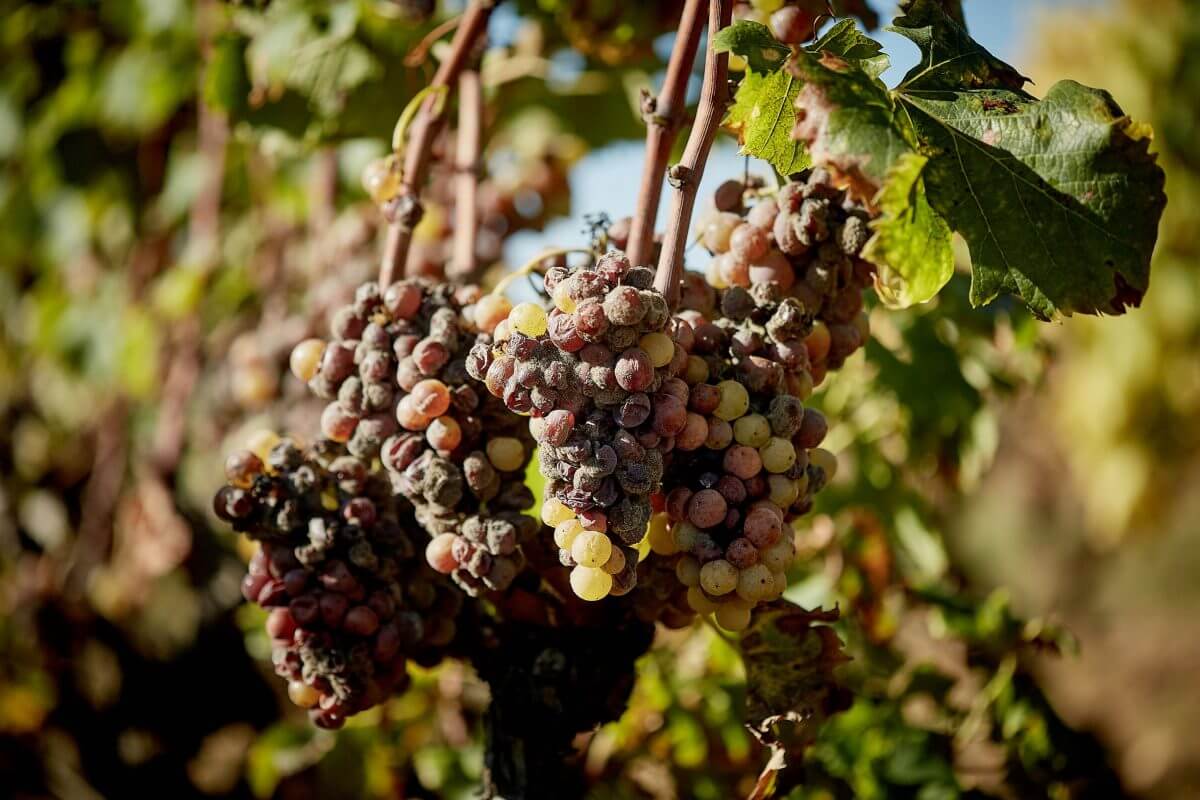
Botrytis Is Key
Botrytis is also referred to as “Noble Rot” to distinguish it from the destructive rot that can form on a grape due to wet, humid conditions.
It’s the special weather conditions of Sauternes that allows Noble Rot to develop throughout the vineyard.
This helps ripe grapes dry out, concentrating its sugars.
Sauternes grapes (Sauvignon Blanc and Semillon) concentrate at different times.
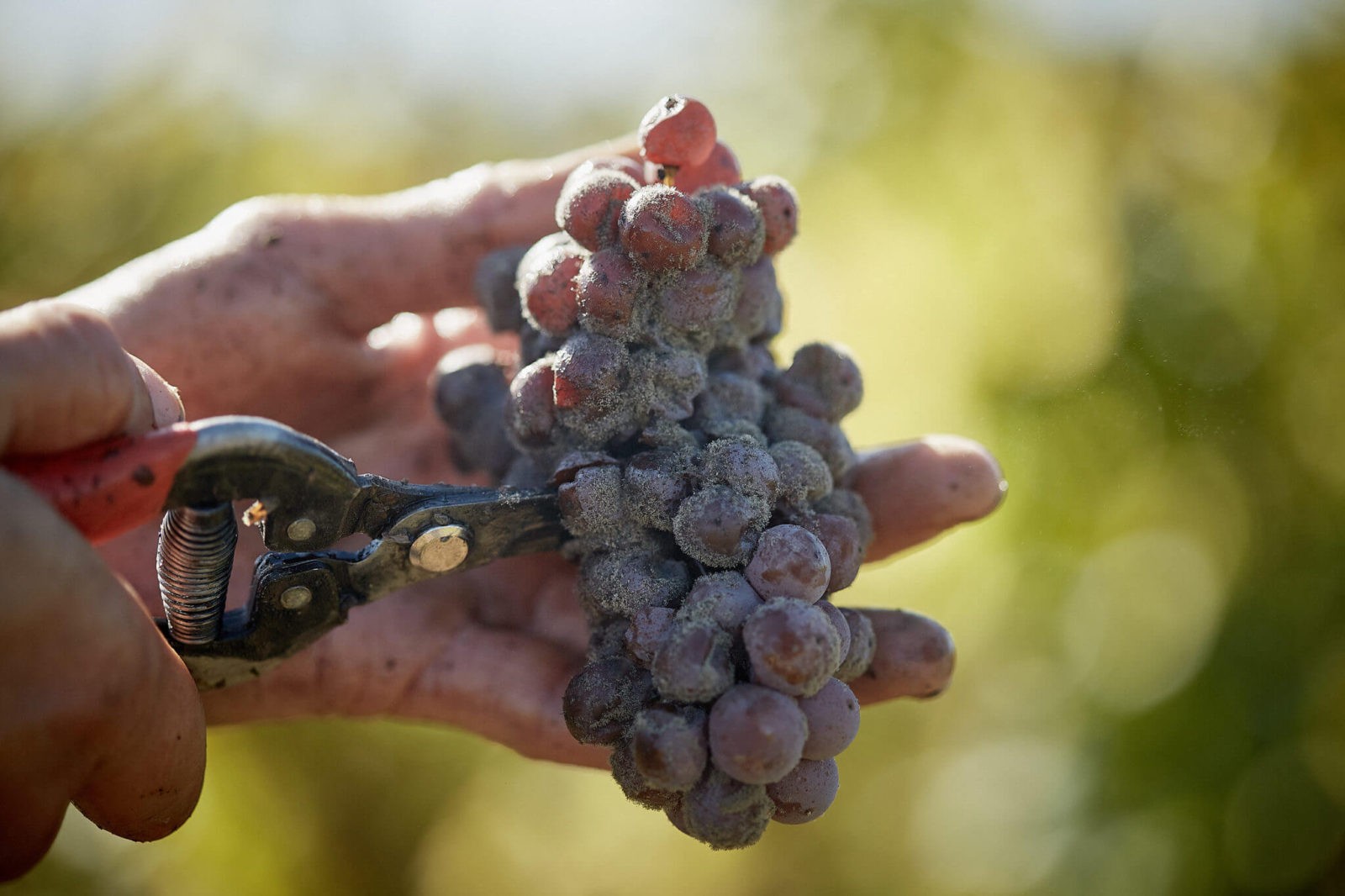
For this reason, workers must carefully examine and pick each grape in several vineyard visits.
Chateau teams are quite nervous, as rain can destroy the entire harvest.
This is one reason why classified growth Sauternes wine can be expensive.
The Cepage and Winemaking of Opalie de Château Coutet
This dry wine is made using an equal blend of Semillon and Sauvignon Blanc.
Vines are 40 years of age, making the resulting juice quite concentrated in flavor.
The fermentation begins in new French oak barrels, with additional aging in a mix of new and older French oak.

The Chateau Coutet Visit
It is important to have a look at the Chateau Coutet website and look at the tours available.
The tours and wines to be tasted may change with the season. It is always a good idea to inquire about what types of wine tasting events are available.
It may be possible to create your own event – but you must ask.





















